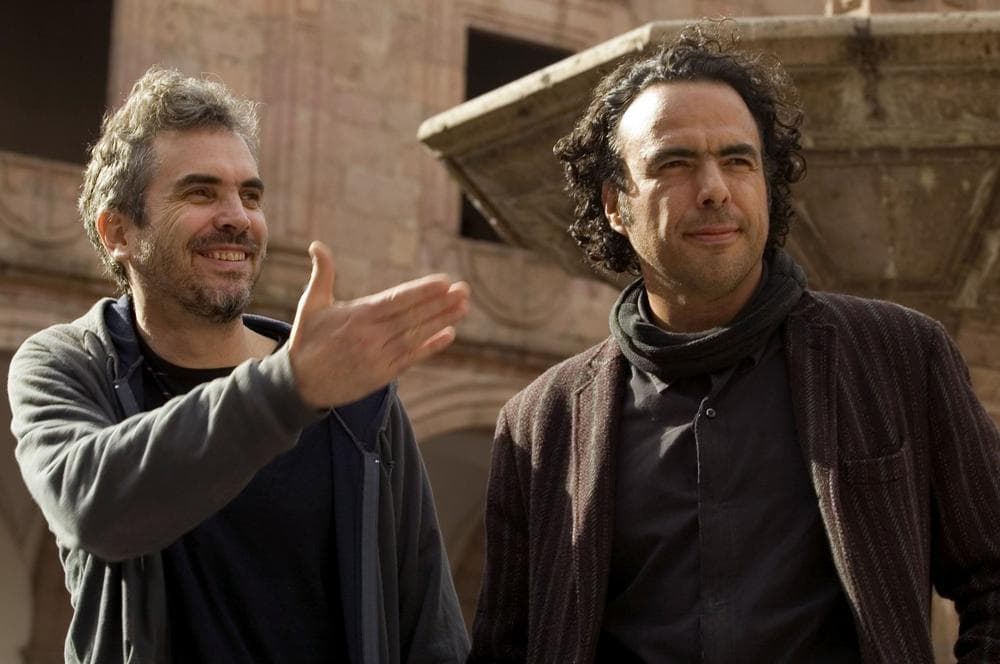Advertisement
Mexican Directors Make Hollywood Home

Alfonso Cuarón's "Gravity" opens in theaters today. It stars George Clooney and Sandra Bullock as two astronauts who get trapped in space.
The film has received rave reviews from critics and has swept the prestigious international film festival circuit.
While Cuarón is not a household name the way George Clooney and Sandra Bullock are, American audiences are probably familiar with films he’s directed, such as "Harry Potter and the Prisoner of Azkaban" and "Children of Men."
Cuarón is part of a wave of talented Mexican directors who came to international prominence in the early 2000s with their Spanish-language films, and have made the crossover to Hollywood films.
At the 2007 Academy Awards, Cuarón, along with his friends and fellow Mexican directors, Alejandro González Iñárritu and Guillermo del Toro, dominated the categories with multiple nominations for their films: Iñárritu for "Babel," del Toro for "Pan’s Labyrinth" and Cuarón for "Children of Men."
What are Mexican filmmakers bringing to Hollywood?
"These films that they're creating sort of break this linear narrative that Hollywood tends to go by, which can make it really fascinating," Javier Ramirez, a Ph.D. candidate at Indiana University, Bloomington, told Here & Now. "And also with their cinematography — the way they set up certain shots, with oblique shots and closeups and just really frenetic pacing, to using hand-held cameras."
Javier’s Picks For An At-Home Mexican Film Festival
"Vamos con Pancho Villa" (Let's Go with Pancho Villa), Fernando de Fuentes, 1936
"Ahí está el Detalle" (You're Missing the Point), Juan Bustillo Oro, 1940
"María Candelaria," Emilio Fernández, 1944
"Nosotros, Los Pobres" (We, The Poor Ones), Ismael Rodríguez, 1948
"La Negra Angustias," Matilde Landeta, 1949
"Espaldas Mojadas," Alejandro Galindo, 1955
"El Lugar sin Límites," (Hell Without Limits), Arturo Ripstein, 1978
"Danzón," María Novaro, 1991
"Sólo Con Tu Pareja" (Love in the Time of Hysteria), Alfonso Cuarón, 1991
"Serpientes y Escaleras," Busi Cortés, 1992
"Sexo, pudor y lágrimas" (Sex, Shame & Tears), Antonio Serrano, 1999
"Amores Perros,"Alejandro González Iñárritu, 2000
"Rudo y Cursi," Carlos Cuarón, 2008
"Voy a Explotar" (I’m Going to Explode), Carlos Naranja, 2008
"No Se Aceptan Devoluciones" (Instructions Not Included), Eugenio Derbez, 2013
- New York Magazine: "The Camera's Cusp: Alfonso Cuarón Takes Filmmaking to a New Extreme With Gravity"
Guest
- Javier Ramirez, Ph.D. candidate at Indiana University, Bloomington, who studies cinema exhibition, with a focus on Mexican cinema.
This segment aired on October 4, 2013.